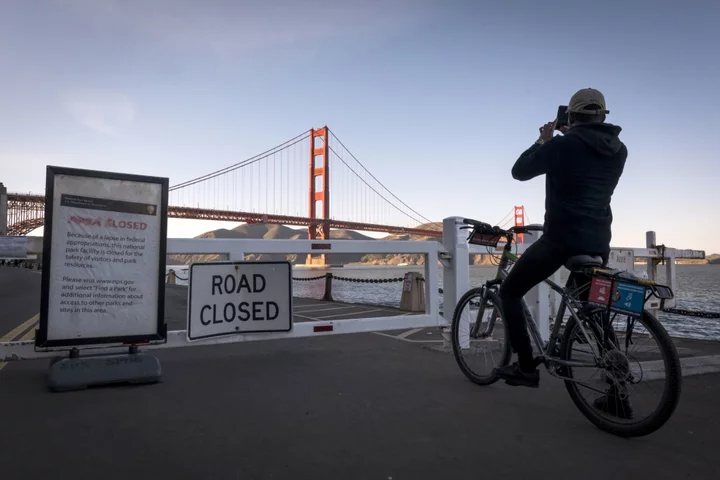The Grand Canyon. Joshua Tree. The Great Smoky Mountains.
America’s 85-million-acre National Park System houses some of the nation’s, if not the world’s, most breathtaking natural treasures, drawing 312 million visitors last year alone.
While the park system is usually a respite from stress for people of all political stripes, it could soon become a focus of finger-pointing in the 2024 presidential campaign.
With Congress careening toward a federal government shutdown this weekend, the Interior Department is preparing to close down iconic park service sites across the country. If lawmakers can’t reach a deal to keep financing the government after the clock strikes midnight on Oct. 1, “gates will be locked, visitor centers will be closed and thousands of park rangers will be furloughed,” the Interior Department said in a fact sheet.
Sites that are physically accessible still will be — but there will be few, if any, staff and services on hand. Even the much-loved “Fat Bear Week” tournament featuring the ever-expanding bears in Alaska’s Katmai National Park will go dark, because employees updating the website will be furloughed, a senior Interior Department official told reporters Thursday.
The park’s bears will grow fatter, the official added, but the government won’t be able to report on their progress.
It’s a big shift from the last — 35-day — shutdown in 2018-2019, when then-President Donald Trump’s administration fought to funnel money toward keeping operations going, even if it meant running afoul of legal guidelines.
The closure of hundreds of sites that span all 50 states would pose a significant threat to local economies, mostly in rural areas. And it could generate partisan attacks, with Republicans accusing President Joe Biden of politicizing the park system.
Trump’s musings on the shutdown largely have as yet been limited to scant posts on his Truth Social account, but other Republicans already argue the Biden administration could divert fee revenue to keep parks open. That includes House Republican Ryan Zinke of Montana, who was Trump’s first secretary of the Interior. He argued that there was plenty of latitude to decide what should keep running.
“When I was secretary, I didn’t shut down the parks,” Zinke said. “When a shutdown becomes political, you can do a lot of harm.”
Previous shutdowns have shown that fee money “can be successfully utilized to keep public lands open during a lapse in appropriations,” Senator John Barrasso, a Wyoming Republican, said in a letter last week.
Yet that came at a price. Trash bins overflowed with rubbish. Toilets did too. Fires were left ablaze. And in Joshua Tree National Park, some of the eponymous trees were destroyed.
When Biden took office in January 2021, the park system was still recovering from damage that came from remaining open during the last shutdown — including deferred maintenance since the funds for that work was depleted, the senior Interior Department official said.
The National Park System, created early in the 20th century, has a long history of widely appealing to a broad swath of Americans. Even when polled on the politically fraught issue of climate change, vast majorities of Republicans, Democrats, and independents stated concern for its effect on the parks, according to data from the National Parks Conservation Association last year.
It isn’t immediately clear how quickly park gates will be padlocked or hotel guests told to find new places to stay. There will be some time to conduct orderly shutdown operations through the weekend and into Monday, the Interior official said.
--With assistance from Gregory Korte and Billy House.
Author: Michelle Jamrisko and Jennifer A. Dlouhy

